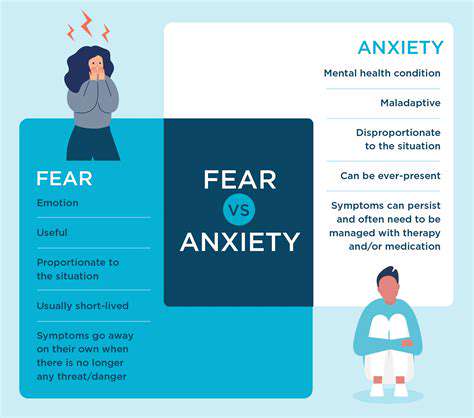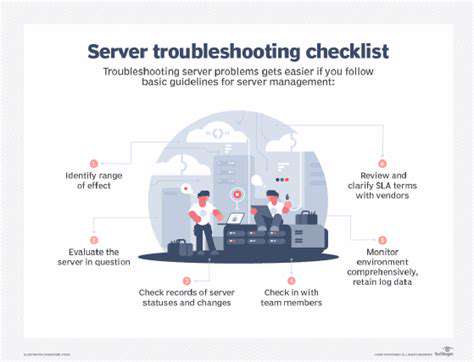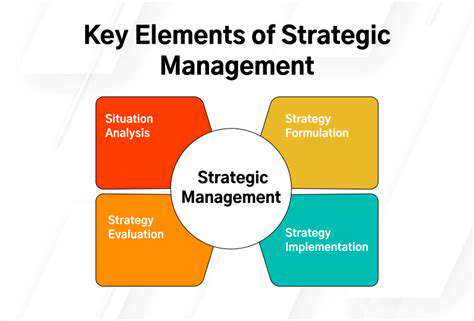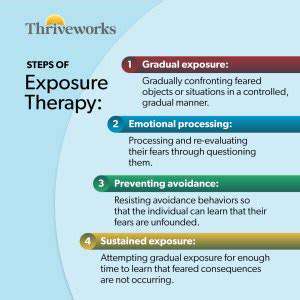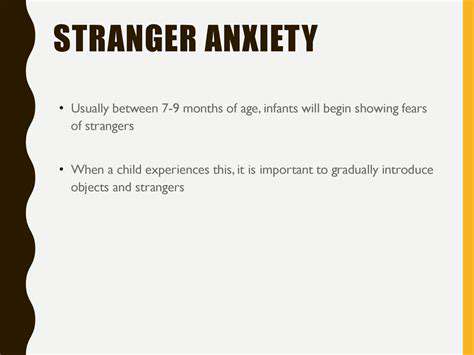Socializing Your Puppy with People of Different Races and Backgrounds
Creating a Safe and Positive Experience for Your Puppy
Early Socialization is Key
A puppy's early life is crucial for developing healthy social skills. Early socialization exposes your puppy to a variety of sights, sounds, people, and other animals in a positive and controlled environment. This crucial period, typically from 3 to 12 weeks of age, helps shape your puppy's future interactions and prevents the development of fear-based behaviors. The goal is to introduce your puppy to as many new experiences as possible without overwhelming them, fostering a confident and well-adjusted adult dog.
Positive experiences during this time build a strong foundation for a happy and well-behaved puppy. Introducing your puppy gradually to new environments and situations, ensuring they have positive interactions with various people and animals, is paramount for future success. Remember, consistency and patience are vital in this process.
Choosing the Right Socialization Opportunities
Careful selection of socialization opportunities is essential. Don't rush the process; instead, focus on creating positive associations. Start with familiar, controlled environments like your home and yard, gradually introducing new and varied experiences. This could include exposure to different types of people – children, adults, people of varying heights, ages, and ethnicities – and different types of dogs and other animals, if they are supervised and well-behaved.
Attending puppy classes and dog parks can be fantastic options, but consider the temperament of other dogs and the overall atmosphere. Observe the interactions between your puppy and other dogs and adjust your approach accordingly. Ensure the experiences are enjoyable and stress-free for your puppy.
Consider visiting a local pet store, but make sure the environment is dog-friendly. Your puppy will encounter new scents, sounds, and people in a controlled setting. Remember, the goal is to create positive associations, not to overwhelm your puppy. Choose locations where your puppy can feel safe and comfortable.
Exposing your puppy to different types of clothing and equipment, such as strollers or wheelchairs, can help them become accustomed to various sights and sounds. This can also help them navigate different environments more confidently in the future.
Preventing and Addressing Fearful Behaviors
Recognizing and addressing fearful behaviors is crucial for a positive socialization experience. If your puppy shows signs of fear or anxiety, such as hiding, whimpering, or trembling, remove them from the situation. Avoid forcing them into a situation they find uncomfortable. Creating positive associations is key, and this might involve rewarding calm behavior with treats or praise.
If your puppy experiences a negative interaction, it's vital to remain calm and reassure them. Avoid scolding or punishing them, as this can worsen their fear. Focus on creating a safe and supportive environment where they can feel secure and comfortable exploring new things at their own pace. Persistent fear can lead to behavioral issues, and early intervention is key to avoiding these issues.
Identifying your core values is a crucial first step in aligning your career aspirations with your personal beliefs and motivations. Think about what truly matters to you in life – is it helping others, creativity, intellectual stimulation, financial security, or something else entirely? Understanding these values allows you to recognize opportunities that resonate with your inner compass, making the process of choosing a career path more fulfilling and less stressful. Understanding your values helps you avoid careers that might pay well but don't align with your personal compass, leading to dissatisfaction and burnout in the long run. By aligning your career with your values, you're more likely to experience sustained motivation and job satisfaction.
Addressing Potential Concerns and Misconceptions

Addressing Financial Implications
Understanding the financial implications of a project is crucial for effective planning and execution. Careful budgeting and forecasting are essential to ensure the project stays within its allocated resources. This involves not only identifying potential costs but also considering potential savings and revenue streams. Thorough cost analysis is vital for preventing unexpected financial burdens and maximizing return on investment.
Detailed financial projections, including revenue forecasts and expense breakdowns, should be developed early in the project lifecycle. These projections will serve as a roadmap, allowing for proactive adjustments to manage potential budget overruns or unforeseen financial challenges. Regular monitoring and reporting of financial performance against the projections are critical for early detection of deviations and enabling timely corrective actions.
Evaluating Project Risks
Identifying and assessing potential risks is a fundamental part of successful project management. Proactive risk assessment allows for the development of mitigation strategies to minimize the impact of potential problems. A comprehensive risk register should list potential threats, their likelihood, and potential impact. This helps in prioritizing resources and efforts to address the most significant risks.
Regular risk reviews are crucial to adapt to changing circumstances and emerging risks. Unexpected events or external factors can significantly alter project risks. Therefore, a dynamic approach to risk management is necessary, ensuring that the project team remains vigilant and adaptable.
Stakeholder Engagement and Communication
Effective communication and stakeholder engagement are paramount for successful project outcomes. This involves actively listening to and understanding the needs and concerns of all stakeholders, from project sponsors and team members to external partners and the wider community. Open communication channels and regular updates are vital for maintaining stakeholder trust and support throughout the project lifecycle.
Establishing clear communication protocols and procedures is also important. This ensures information is shared accurately, consistently, and promptly, fostering transparency and reducing misunderstandings. This fosters a collaborative environment where all stakeholders feel heard and valued, ultimately contributing to project success.
Resource Allocation and Management
Efficient resource allocation is key to project success. This involves carefully considering the necessary human resources, materials, technology, and other resources required for completing project tasks within the given timeline and budget. Clear definitions of roles and responsibilities will prevent conflicts and ensure that each team member understands their contributions.
Effective resource management involves proactively monitoring the usage of allocated resources. This helps identify potential bottlenecks or inefficiencies early on. Proactive management of allocated resources is critical to ensure the project remains on track and achieves its objectives.
Contingency Planning and Scalability
Developing contingency plans is crucial for navigating unexpected events and adapting to changing circumstances. These plans outline alternative approaches or strategies to address potential disruptions or deviations from the project plan. These plans should be reviewed and updated regularly to ensure their relevance and effectiveness.
Ensuring project scalability is essential for accommodating future growth or changes in project scope. A well-structured project design, considering potential expansion or adaptation, allows for flexibility and future development. This forward-thinking approach ensures the project remains relevant and adaptable to changing market conditions.
Long-Term Benefits of Diverse Socialization
Early Exposure to Diverse Socialization
Early socialization plays a crucial role in shaping a puppy's future behavior and social skills. Exposing puppies to a variety of people, from different ages, ethnic backgrounds, and physical characteristics, is vital for developing well-rounded, confident dogs. This early exposure helps puppies learn to interact appropriately with people of all types, reducing the risk of developing anxieties or fear-based behaviors later on. Proper socialization ensures your puppy can navigate various social situations with ease and confidence, leading to a happier and healthier relationship with the world around them.
Consistent and positive interactions with diverse groups of people throughout the puppy's developmental stages are key. This means not just encountering a few people but actively engaging in controlled, positive interactions. This includes introducing the puppy to people of different sizes, wearing different clothing, speaking in various tones, and even having different physical abilities. The goal is to create a positive association with human interaction, demonstrating that people are generally friendly and safe.
Positive Impacts on Adult Behavior
The benefits of diverse socialization extend well into adulthood. A puppy socialized with a wide range of people is more likely to be comfortable and confident in various social situations. This includes interactions at dog parks, during walks, and even in public spaces. A dog well-socialized with different types of people is less likely to exhibit fear or aggression towards strangers. This translates into a more adaptable and well-behaved companion, making it easier to manage and enjoy during outings and social situations.
Furthermore, a dog socialized with a diverse group of people is more likely to have a greater tolerance for different stimuli and personalities. This adaptability is invaluable in navigating the ever-changing world and the different people your puppy will encounter. A dog who is used to interacting with a variety of individuals will be better prepared to handle unexpected situations and challenging encounters, leading to a happier and more harmonious life for both the dog and its owner.
The long-term effects of diverse socialization extend beyond simple interactions. It fosters a deeper understanding of human behavior and helps to build trust and positive associations with people, leading to a stronger and more fulfilling relationship with your canine companion.
This broad exposure to diverse individuals also helps prevent the development of potentially harmful behaviors and allows the puppy to develop a more balanced and well-adjusted personality, setting them up for success in various social situations.
Read more about Socializing Your Puppy with People of Different Races and Backgrounds
Hot Recommendations
- The Impact of Early Socialization on a Dog's Interaction with Other Animals
- Car Travel and Puppy Socialization: Making the Journey a Positive Experience
- The Importance of Early Environmental Exposure for Puppy Development
- Taking Your Puppy to the Vet: Positive Socialization Strategies
- Making Training a Positive Experience for Your Puppy
- Public Transportation and Puppy Socialization: A Step by Step Guide
- Safe Socialization: Allowing Others to Pet Your Puppy
- Helping a Puppy Who Struggles with "Stay"
- Positive Puppy Interactions: Making Meetings with New Friends Fun
- No Treats Needed? Training Basic Commands with Verbal Praise



